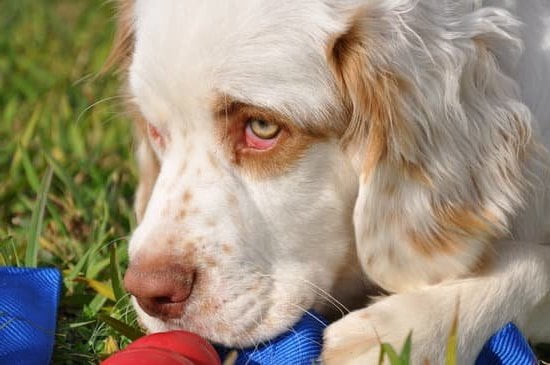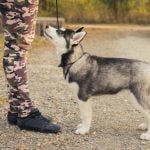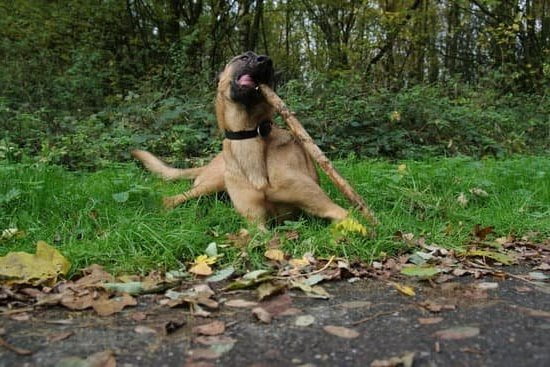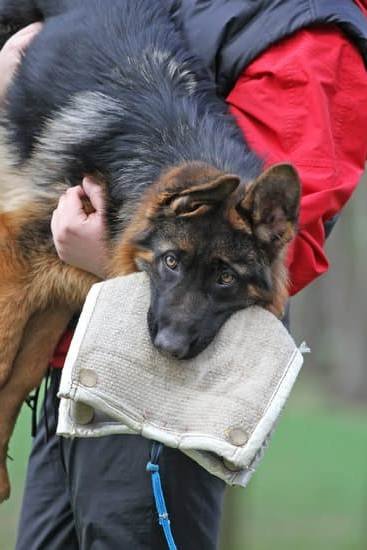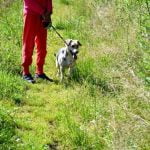Are you struggling with a dog that shows aggressive behavior around food? In this article, we will discuss how to train your dog to stop food aggression. This comprehensive guide will provide valuable insights into understanding, addressing, and overcoming food aggression in dogs. By following our step-by-step approach, you can create a safe and positive feeding environment for both you and your furry friend.
Food aggression in dogs is a common behavioral issue that can be attributed to various factors such as genetics, past experiences, or resource guarding instincts. Understanding the root cause of this behavior is essential in effectively addressing it. By recognizing the signs and behaviors of food aggression, pet owners can take appropriate measures to prevent potential conflicts during feeding time.
It’s crucial for dog owners to recognize the importance of addressing food aggression in their pets. Not only does it ensure a harmonious relationship between the owner and the dog, but it also promotes overall safety within the household. Through establishing trust and implementing positive reinforcement training methods, pet owners can effectively train their dogs to exhibit non-aggressive behavior around food.
Signs and Behaviors of Food Aggression
Understanding food aggression in dogs is crucial for any pet owner. Food aggression is a behavior where a dog becomes possessive or aggressive around their food, often growling or even biting if someone approaches while they are eating. This behavior can be dangerous and needs to be addressed to ensure the safety of both the dog and those around them.
Signs and behaviors of food aggression can vary from mild to severe, and it’s important for pet owners to be able to recognize these signs early on. Some common signs include growling or snarling when approached while eating, guarding their food bowl or treats, stiff body language, snapping, or biting. These behaviors can occur during mealtime but may also extend to any situation involving food or treats.
It’s important for pet owners to address these signs early on to prevent the behavior from escalating. Food aggression can lead to dangerous situations and impact the overall well-being of your pet. By understanding the signs and behaviors of food aggression, pet owners can take proactive steps to address this behavior and create a safer environment for everyone involved.
| Common Signs | Interpretation |
|---|---|
| Growling/snapping when approached while eating | Possessive behavior regarding food |
| Guarding food bowl/treats | Protective behavior over resources |
| Stiff body language | Sign of tension or discomfort |
Importance of Addressing Food Aggression in Dogs
Food aggression in dogs can be a serious behavior issue that should not be ignored. It is important for dog owners to understand the significance of addressing this issue in order to ensure the safety and well-being of both the dog and the people around them.
The signs of food aggression can vary from mild to severe, but it is crucial to recognize and address these behaviors early on. Some common signs of food aggression in dogs include growling, snapping, or biting when approached while eating, guarding their food bowl, or displaying other possessive behaviors related to food.
Addressing food aggression is essential for creating a safe and harmonious environment at home. By tackling this issue head-on, dog owners can prevent potential injuries or conflicts with other pets or family members. Additionally, addressing food aggression can contribute to building a trusting and respectful relationship with your dog based on clear boundaries and positive reinforcement.
In order to address food aggression effectively, it is important to establish a consistent feeding schedule and create a safe feeding environment for your dog. Furthermore, using positive reinforcement training methods can help modify your dog’s behavior around food and reduce their aggressive tendencies.
If the problem persists or escalates, seeking professional help and resources for extreme cases of food aggression is highly recommended. Taking proactive steps to address food aggression can lead to a happier and more balanced relationship with your furry companion.
Building Trust and a Positive Relationship With Your Dog
Understanding Your Dog’s Behavior
Before addressing food aggression in your dog, it’s essential to understand their behavior and the reasons behind their aggression. Dogs can display food aggression due to various factors such as fear, anxiety, possessiveness, or previous negative experiences related to food. By recognizing these underlying causes, you can take steps to build trust and create a positive relationship with your dog.
Patience and Consistency
Building trust with your dog takes time and patience. It’s important to approach training with a calm and consistent demeanor to avoid triggering any further aggression. Spend quality time with your dog outside of mealtimes, engaging in activities they enjoy such as playtime or regular exercise. This helps create a positive association between you and reinforces trust.
Establishing Clear Boundaries
Creating a positive relationship with your dog involves establishing clear boundaries. Be consistent in enforcing rules regarding mealtime behavior and ensure that your dog understands that you are the leader of the pack. Using positive reinforcement techniques such as praise and rewards for good behavior can reinforce the bond between you and your pet.
By focusing on building trust and a positive relationship with your dog, you can lay the groundwork for addressing food aggression effectively. This not only improves their behavior around food but also strengthens the bond between you and creates a harmonious living environment for both you and your furry companion.
Creating a Safe Feeding Environment
When it comes to training your dog to stop exhibiting food aggression, creating a safe feeding environment is crucial. This means finding a quiet and secure place in your home where you can feed your dog without distractions or potential triggers for aggressive behavior. It’s important to choose a feeding area that is away from high-traffic areas and where your dog feels comfortable.
In addition, it’s essential to ensure that there are no other pets or people around when it’s mealtime for your dog, especially if they have shown signs of food aggression in the past. By creating a peaceful and undisturbed space for them to eat, you can reduce the likelihood of any aggressive behavior towards others during feeding time.
Another key aspect of creating a safe feeding environment is to establish clear boundaries and rules around mealtime. This means teaching your dog to wait patiently for their food and not allowing them to exhibit demanding or aggressive behaviors while you prepare their meal. By setting these boundaries, you can help prevent any potential incidents of food aggression while also reinforcing positive behavior during feeding time.
Establishing a Consistent Feeding Schedule
One crucial aspect of addressing food aggression in dogs is to establish a consistent feeding schedule. This routine can help create a sense of security and predictability for your dog, ultimately reducing their anxiety around mealtime. Here are some tips for establishing a consistent feeding schedule:
- Set specific times for feeding: Choose two or three times during the day when you will feed your dog, and try to stick to these times as closely as possible.
- Provide meals in the same location: Designate a specific area in your home where you will consistently place your dog’s food and water bowls.
- Limit access to food throughout the day: Avoid leaving food out for your dog to graze on, as this can contribute to possessive behavior around mealtime.
By implementing a consistent feeding schedule, you can help your dog feel more secure and reduce the likelihood of food aggression behaviors.
It’s important to note that each dog may have specific dietary needs and preferences, so it’s essential to consult with a veterinarian or animal nutritionist to determine the appropriate feeding schedule and portion sizes for your dog. Additionally, observe how your dog responds to the established feeding schedule and make adjustments as needed to ensure their comfort and well-being. Remember that consistency is key when it comes to addressing food aggression in dogs.
Positive Reinforcement Training Methods
Use of Rewards and Treats
One effective way to train your dog to stop food aggression is through the use of positive reinforcement. This involves rewarding your dog for exhibiting good behavior around food, such as waiting patiently for their meal or allowing you to approach their food bowl without any signs of aggression. You can use treats, praise, or toys as rewards to encourage this desired behavior.
Clicker Training
Clicker training is another positive reinforcement method that can be used to address food aggression in dogs. It involves using a clicker to mark the moment when your dog displays the desired behavior, followed by a reward. For example, if your dog backs away from their food bowl when you approach, you would click the clicker at that moment and then give them a treat as a reward.
Desensitization and Counterconditioning
Desensitization and counterconditioning are also useful techniques for addressing food aggression. This involves gradually exposing your dog to situations that trigger their aggressive behavior (such as approaching their food while they are eating) in a controlled and positive way. Over time, this can help change your dog’s response to these triggers from one of aggression to one of calm acceptance.
By using these positive reinforcement training methods, you can help your dog overcome their food aggression while also strengthening the bond between you and your pet. These methods focus on rewarding good behavior rather than punishing bad behavior, creating a more positive and harmonious feeding environment for both you and your furry friend.
Seeking Professional Help and Resources for Extreme Cases of Food Aggression
Dealing with food aggression in dogs can be a challenging and potentially dangerous situation. In extreme cases where the dog displays severe aggression or has a history of aggressive behavior, seeking professional help is crucial. Professional dog trainers and behaviorists have the experience and expertise to assess the situation and provide specialized guidance for addressing food aggression.
When dealing with extreme cases of food aggression, it is important to seek the help of a qualified and certified professional. They will be able to conduct a thorough evaluation of your dog’s behavior, identify triggers for aggression, and develop a personalized training plan to address the issue. A professional can also provide guidance on safety measures to prevent confrontations during feeding times and minimize the risk of injury.
In addition to professional trainers and behaviorists, there are resources available for dog owners facing extreme cases of food aggression. This may include support groups, online forums, or specific training programs designed to address aggressive behaviors in dogs.
Seeking out these resources can provide valuable information, support, and encouragement for addressing food aggression in dogs effectively. By utilizing professional help and available resources, dog owners can work towards managing or resolving their dog’s food aggression while ensuring their own safety and that of others around them.
Conclusion and Next Steps for Training Success
In conclusion, it is essential for dog owners to understand the signs and behaviors of food aggression in order to address this issue effectively. By building trust and a positive relationship with your dog, you can create a safe feeding environment and establish a consistent feeding schedule to help alleviate food aggression. Implementing positive reinforcement training methods can also be highly effective in training your dog to stop food aggression.
Furthermore, seeking professional help and resources for extreme cases of food aggression is crucial for the well-being of both your dog and yourself. Dog trainers and behaviorists have the expertise and experience to provide specialized training programs tailored to your dog’s specific needs. It is important to remember that every case of food aggression is different, so seeking professional assistance can greatly increase the chances of success in addressing this behavior.
By being patient, consistent, and committed to training your dog, you can make significant progress in reducing or stopping food aggression. Remember that change takes time, but with the right approach and resources, you can create a harmonious feeding routine with your beloved canine companion.
Frequently Asked Questions
Can Dogs Be Trained Out of Food Aggression?
Dogs can be trained out of food aggression through positive reinforcement and desensitization. This involves gradually getting the dog used to people being around their food and teaching them that good things happen when others are near their food.
It’s important to work with a professional trainer who has experience in dealing with food aggression in order to ensure the safety of both the dog and the humans involved.
How Do I Stop My Dog From Being Aggressive Over Food?
There are several strategies to stop a dog from being aggressive over food. First, it’s important to establish yourself as the pack leader through training and consistent discipline.
Additionally, feeding your dog by hand can help build trust and reduce food guarding behavior. It’s also crucial to avoid punishing or scolding the dog for displaying food aggression, as this can exacerbate the problem.
Does Food Aggression in Dogs Go Away?
Food aggression in dogs can be managed and improved with proper training and behavior modification techniques. However, it’s essential to understand that complete elimination of this behavior may not be possible in all cases, especially if there is a underlying medical or psychological issue causing the aggression.
With consistent training, patience, and understanding of the individual dog’s needs, progress can be made in reducing and managing food aggression over time.

Welcome to the blog! I am a professional dog trainer and have been working with dogs for many years. In this blog, I will be discussing various topics related to dog training, including tips, tricks, and advice. I hope you find this information helpful and informative. Thanks for reading!

